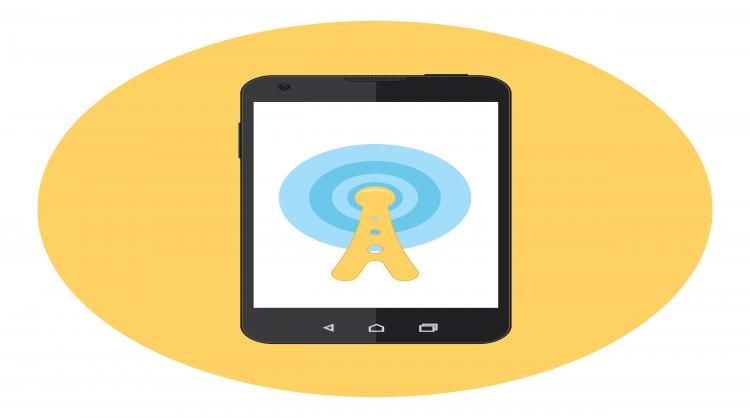FCC Releases Rules for Rural ILEC Broadband-Only Service
October 21, 2016 | by Andrew Regitsky

This week, we get a little technical, but our subject is important and potentially impacts hundreds of ILECs. Remember back in March when the FCC released an Order in Docket 10-90 reforming the rules governing universal service support for rate-of-return (ROR) ILECs? One of the key justifications for that Order was to ensure small ILECs receive Connect America Fund (CAF) support in situations in which their end user customers choose to subscribe to broadband service only, without also subscribing to traditional plain old telephone service (POTS). Rural ILECs were becoming more and more handicapped as customers wanted broadband service only and the rules did not allow universal service support for such a stand-alone service.
In its March Order, the Commission solved this problem by modernizing the existing interstate common line support (ICLS) rules to provide support in situations where the end user customer subscribes to stand-alone broadband. This revised support is known as Connect America Fund Broadband Loop Support (CAF BLS). To implement these reforms, the Commission revised certain cost allocation and tariffing rules for carriers to introduce supported Consumer Broadband-only Loop services.
Specifically, the Commission required a carrier offering Consumer Broadband-only Loops to move these costs from the special access category to a new Consumer Broadband-Only Loop category. The Commission also adopted a $42 per loop per month rate cap for ROR ILECs electing model-based subsidies and a rate methodology for ROR ILECs receiving CAF BLS.
In addition, ROR ILECs electing model-based support are no longer eligible to participate in the National Exchange Carrier Association (NECA) Common Line pooling mechanism but can continue to participate in the NECA tariffs.
Finally, the Commission now requires ROR ILECs to impute an amount equal to the Access Recovery Charge (ARC) they assess on voice/broadband lines to their supported consumer broadband-only lines.
The Commission recently followed up its monumental March Order by releasing an Order on October 6, 2017, in Docket 16-317 establishing the actual procedures for rural ILECs to file access charge tariffs and Tariff Review Plans (TRPs) for their broadband-only loop service. The tariffs must be filed with 15-days notice on December 19, 2016 to take effect on January 3, 2017. The new procedures can be found here:
http://transition.fcc.gov/Daily_Releases/Daily_Business/2016/db1006/DA-16-1145A1.pdf.
Here are the important points:
These procedures are for rural ILECs subject to either section 61.38 or section 61.39 of the Commission’s rules regardless of whether they elect model-based support or Connect America Fund Broadband Loop Support (CAF BLS), (ROR ILECs subject to section 61.38 of the Commission’s rules file access charges based on projected costs and demand, while those subject to section 61.39 file charges based on historical costs and demand).
A rural ILEC can choose to not offer a tariffed Consumer Broadband-only Loop service. Instead it may provide a detariffed retail broadband Internet access service. It is solely the choice of the ILEC. The carrier may not, however, tariff the charge to some customers, while detariffing it for others.
If the ROR ILEC chooses to detariff its wholesale consumer broadband-only loop offering, it no longer will be voluntarily offering the transmission as a service that is assessable for contributions purposes. As such, it would not have a contributions obligation for that service, similar to other carriers that previously chose not to offer a separate tariffed broadband transmission service.
Carriers electing to receive model-based support must remove the Common Line and Consumer Broadband-only Loop services from rate-of-return regulation. Those services are now subject to specific rate caps and no cost justification is required. Rate-of-return LECs electing model-based support that participate in the NECA traffic-sensitive tariff will not have the option of changing their participation in the traffic-sensitive tariff outside the regular election process.
Rural ILECs receiving CAF-BLS must elect whether or not to participate in the NECA common line and traffic-sensitive tariff and pooling processes by March 1, 2017. At that time, these carriers will be able to decide whether to detariff their Broadband transmission services and remove the associated costs from the NECA pooling process.
In the March Order, the Commission required ROR ILECs to impute an amount equal to the ARC charge they assess on voice-broadband lines to their Consumer Broadband-only lines. It now clarifies that this imputation does not exclude Consumer Broadband-only Loops eligible for Lifeline support. An imputation also does not apply to a retail broadband Internet access offering.
Importantly, the Commission also clarifies that all ROR ILECs must remove the costs of Consumer Broadband-only Loops from the special access category. These reassigned costs are the basis for determining the revenue requirement of the Consumer Broadband-only Loop category for carriers receiving CAF BLS.
Without this cost reassignment, there would be double recovery for carriers detariffing Consumer Broadband-only Loops. Accordingly, this cost reassignment is required regardless of whether they receive model-based support or CAF BLS, whether they tariff or detariff the charges for Consumer Broadband-only Loops, or whether they self-provision those facilities for a retail detariffed broadband Internet access offering.
As we pointed out when the Commission adopted these new rules earlier this year, allowing rural ILECs to receive universal service support for stand- alone broadband services was necessary to ensure their very survival as consumers more and more rely on wireless POTS services. It is good news that beginning in January; these carriers will have a better chance to compete for customers.
By Andy Regitsky, CCMI

